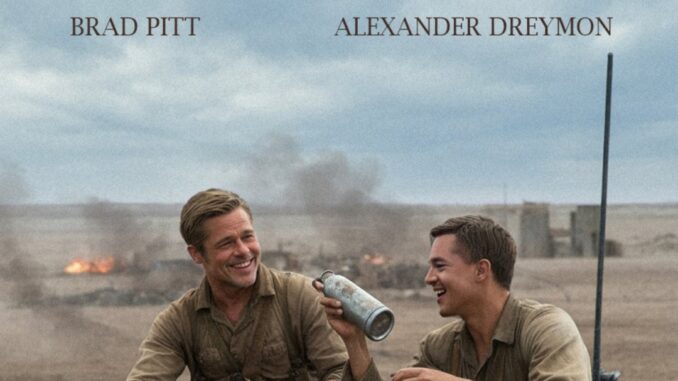
In the war-ravaged landscapes of Europe during the final stretch of World War II, Brothers in Arms emerges as a haunting, emotional, and gripping tale of brotherhood, loss, and the fragile thread of humanity that soldiers cling to in the face of chaos. Directed by acclaimed filmmaker David Mackenzie, the film stars Brad Pitt and Alexander Dreymon as two war-hardened soldiers navigating the moral fog of battle.
Brad Pitt portrays Captain Jack Mercer, a decorated but weary American officer whose leadership has earned both fear and respect. Alexander Dreymon steps into the role of Lieutenant Erik Weiss, a German defector turned Allied translator haunted by the brutal choices of his past. Together, they lead a fractured unit tasked with holding a strategic village on the German front as the war draws to its brutal conclusion.
What sets Brothers in Arms apart from other war dramas is its deep psychological undertone. The film avoids glorifying battle, instead focusing on the internal war waged by its protagonists. Captain Mercer, hardened by years of combat, teeters on the edge of detachment, while Weiss struggles with guilt and suspicion from fellow soldiers due to his former allegiance.
Through masterful cinematography and a somber score, the film captures the cold, gray hopelessness of war-torn Europe. Long tracking shots through bombed-out villages and quiet, intimate moments in foxholes highlight the emptiness of victory when weighed against the human cost. Mackenzie’s direction leans into silence, often allowing the actors’ expressions to convey the story more powerfully than any line of dialogue.
The chemistry between Pitt and Dreymon is magnetic. Their relationship evolves from mutual distrust to an unspoken brotherhood forged in blood and sacrifice. Pitt delivers a restrained but powerful performance, while Dreymon brings a raw vulnerability to Weiss, making his character’s arc one of the most compelling elements of the film.
The supporting cast adds depth to the narrative, featuring strong performances from up-and-coming talents like Jacob Elordi as a naive young recruit, and Lashana Lynch as a battle-hardened medic with her own scars. Together, the ensemble paints a diverse and authentic portrait of those caught in the storm of war.
Central to the film’s power is its recurring theme: what does it mean to stay human in a world that demands inhumanity? As the war escalates and their mission becomes increasingly desperate, Mercer and Weiss are forced to make impossible decisions—each one chipping away at their sense of self.
One particularly gut-wrenching scene involves the interrogation of a captured enemy soldier, where the line between justice and vengeance becomes dangerously blurred. The moment underscores the film’s refusal to present easy answers, instead challenging viewers to grapple with the moral ambiguity that defines real-world conflict.
Brothers in Arms also serves as a poignant commentary on identity and forgiveness. Weiss’s struggle to reconcile his heritage with his current loyalties mirrors the internal conflicts faced by many displaced by war. His journey becomes a metaphor for healing—not just for the characters, but for a fractured world seeking reconciliation after unimaginable trauma.
The cinematography by Greig Fraser adds another layer of richness to the story. The contrast between the bleak, desaturated battlegrounds and the warm, flickering moments of humanity—the sharing of a cigarette, a letter from home, a brief lull in fighting—provides a visual metaphor for hope amidst despair.
As the film reaches its climactic final act, Mercer and Weiss face their greatest test: a decision that will determine not only the fate of their unit but the remnants of their own humanity. The resolution is neither triumphant nor tragic but deeply human—an honest reflection of war’s lasting scars.
Brothers in Arms is more than just a war film—it’s a meditation on brotherhood, redemption, and the moral cost of survival. With powerhouse performances, striking visuals, and an emotionally resonant script, it stands as one of the most affecting portrayals of World War II in recent cinema.
Leave a Reply